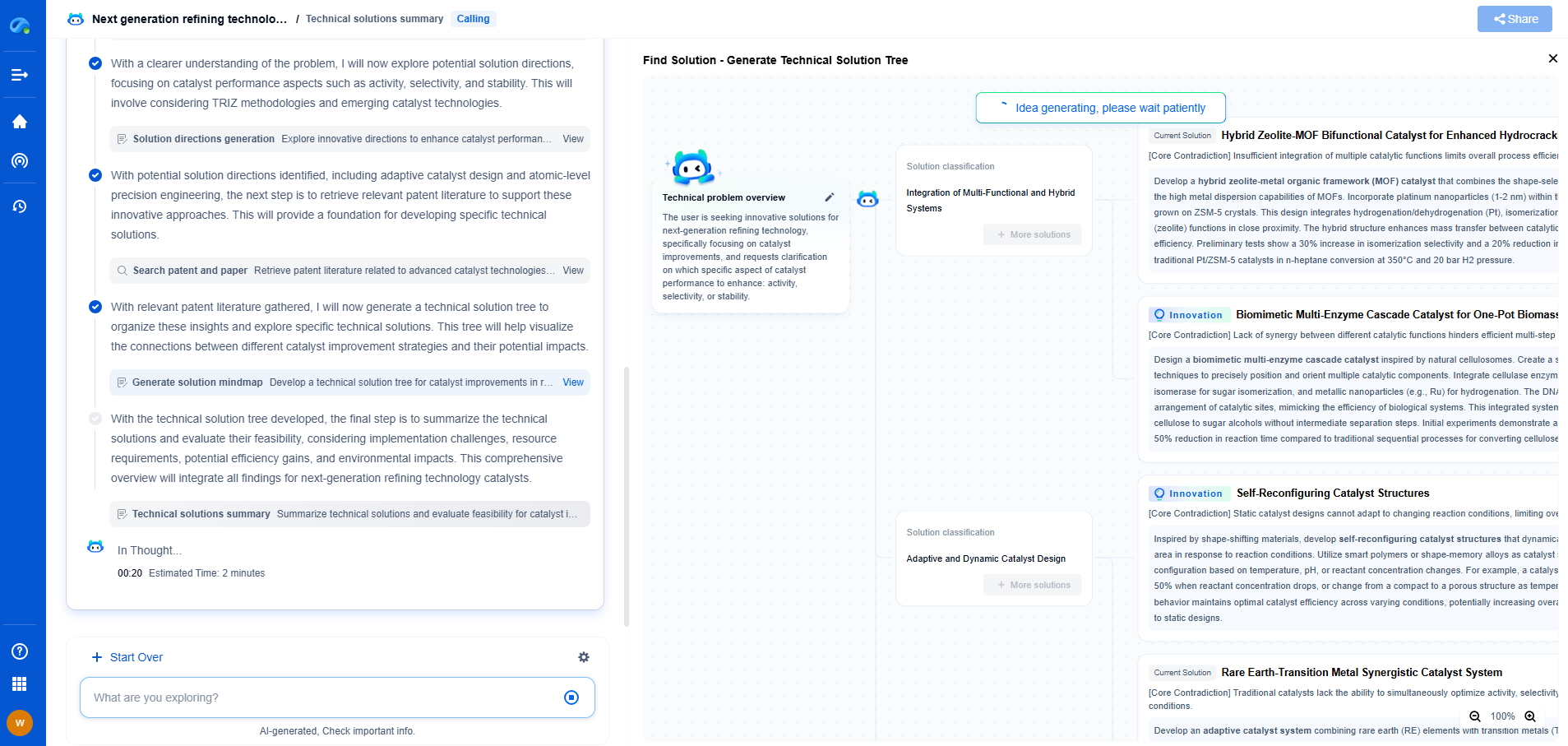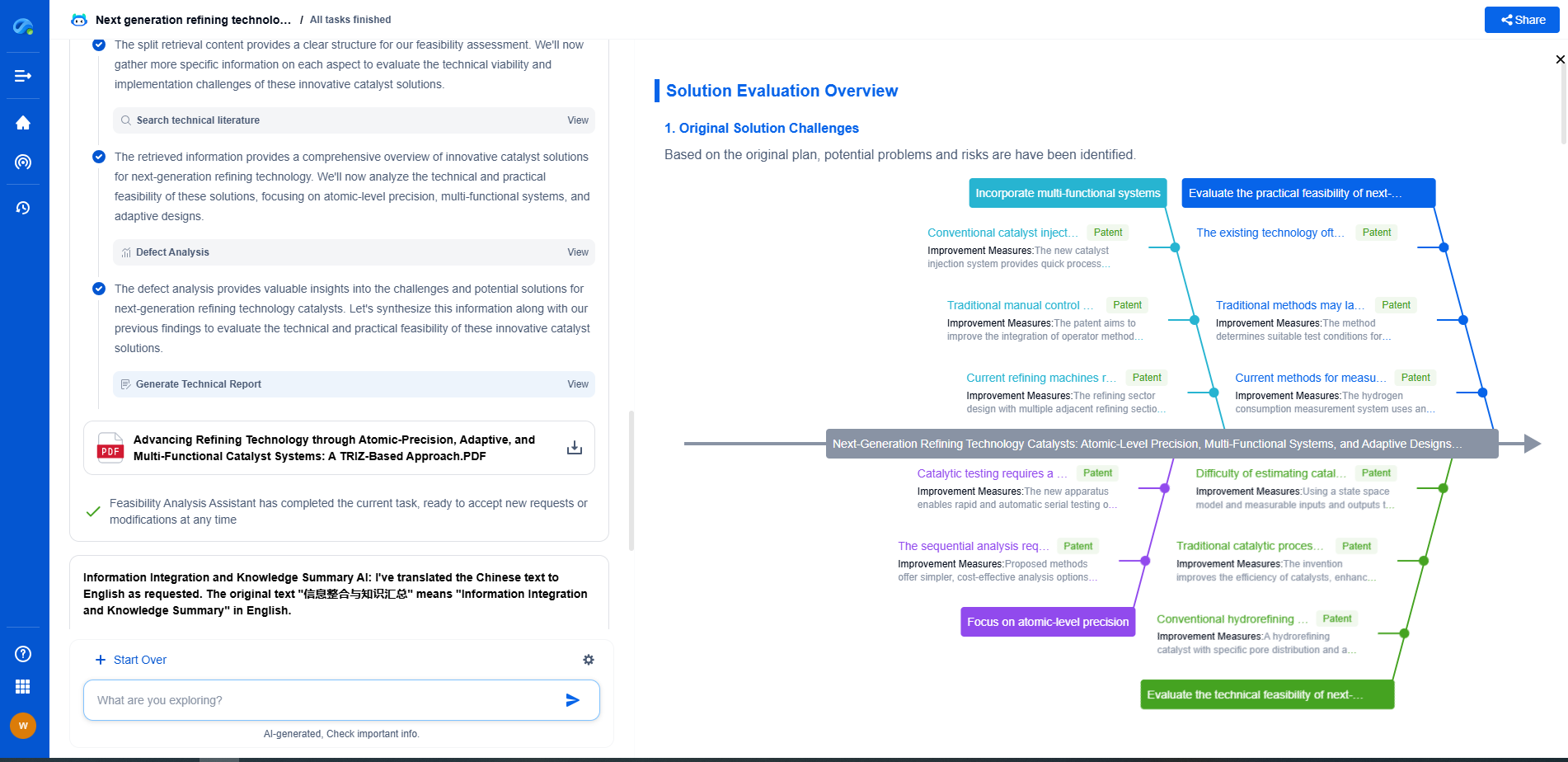Fixing Lost Circulation: Best LCMs for Different Well Conditions
JUN 20, 2025 |
Lost circulation is a common drilling problem that can significantly impact the efficiency and cost-effectiveness of well operations. It occurs when drilling fluids are lost to subsurface formations instead of returning to the surface. This issue not only increases operational costs but can also lead to safety hazards and environmental concerns. To tackle lost circulation, Lost Circulation Materials (LCMs) are employed to seal fractures, pores, and other pathways where drilling fluids escape. Selecting the right LCMs depends largely on the specific well conditions. This blog explores the best LCMs for different well scenarios and how they can be strategically used to mitigate lost circulation.
Understanding Lost Circulation Materials (LCMs)
LCMs are materials added to drilling fluids to prevent or reduce the loss of circulation. They can be broadly classified into three types: fibrous, granular, and flake materials. Each type has distinct properties designed to address specific loss situations. Fibrous materials such as cedar bark and cottonseed hulls are effective in bridging larger fractures, while granular materials like ground limestone are ideal for sealing porous formations. Flake materials, which include mica and cellophane, work well for both bridging and sealing applications. The choice of LCM depends on the nature of the formation, the severity of fluid loss, and the specific operational goals.
LCMs for Different Well Conditions
Fractured Formations
In fractured formations, lost circulation can be severe due to large, open fractures that allow drilling fluids to escape rapidly. To combat this, fibrous and large-sized granular LCMs are often used. Fibrous materials like cedar bark and cottonseed hulls are effective in bridging large openings. Additionally, coarse granular materials such as nut shells can help fill and seal these fractures. Combining these LCMs can create a more comprehensive seal, reducing further fluid loss.
Highly Permeable Sands
Highly permeable sands pose a different challenge, as they allow fluids to seep through their porous structure. In such conditions, fine granular materials, such as calcium carbonate, are beneficial due to their ability to enter and seal small pores. Flake materials like mica can also be effective in layering over the sand structure, creating a barrier against fluid loss. It’s crucial to ensure that the drilling fluid’s viscosity is optimized to support the suspension and transport of these smaller particles.
Unconsolidated Formations
Unconsolidated formations, which consist of loose, uncemented materials, can lead to unpredictable fluid loss. In these scenarios, a combination of granular and fibrous LCMs can provide stability and sealing capabilities. Medium-sized granular materials like ground limestone can help stabilize the formation, while fibrous materials aid in bridging gaps. Ensuring that the drilling fluid has the right rheological properties is essential for the effective transport and placement of these materials.
Depleted Reservoirs
Depleted reservoirs often have reduced pressure, which can exacerbate lost circulation problems. In these conditions, a more strategic approach is required, often involving tailor-made LCM blends. A combination of fibrous, granular, and flake materials is utilized to create a robust seal. The use of crosslinked polymer systems can also be considered, as they expand upon contact with water, offering increased sealing efficacy. Adapting the formulation to the specific characteristics of the depleted reservoir is key to success.
Innovations in LCM Technology
The field of LCM technology is continually evolving, with new materials and techniques being developed to improve effectiveness. Smart LCMs, which adapt to changing formation conditions, and environmentally friendly materials designed to minimize ecological impact are gaining popularity. The integration of crosslinking agents, which enhance the sealing properties of conventional LCMs, represents another area of innovation. Staying informed about these advancements is essential for optimizing lost circulation strategies.
Conclusion
Lost circulation remains a significant challenge in drilling operations, but with the strategic use of LCMs, it can be effectively managed. Understanding the specific well conditions and selecting appropriate materials can lead to more efficient and cost-effective operations. While traditional materials remain effective, ongoing advancements in LCM technology offer new opportunities to address lost circulation more comprehensively. By tailoring solutions to the unique demands of each well, operators can minimize fluid loss, enhance wellbore stability, and ensure safer and more sustainable drilling practices.
Navigating the Complexities of Drilling Innovation? Let AI Do the Heavy Lifting
In an industry where subsurface conditions, materials science, and drilling dynamics evolve rapidly, staying ahead of technical innovation and protecting your intellectual property can be overwhelming.
Patsnap Eureka, our cutting-edge AI assistant, is built for R&D and IP professionals in high-tech industries like drilling technologies. Whether you're optimizing rotary steerable systems, evaluating high-temperature materials, or exploring next-gen automation in directional drilling, Eureka enables real-time analysis of the latest patents, technology landscapes, and competitive movements—all from one intelligent, intuitive platform.
Ready to accelerate your development cycle and make strategic decisions with confidence? Explore Patsnap Eureka today—where smart drilling starts with smarter insights.
- R&D
- Intellectual Property
- Life Sciences
- Materials
- Tech Scout
- Unparalleled Data Quality
- Higher Quality Content
- 60% Fewer Hallucinations
Browse by: Latest US Patents, China's latest patents, Technical Efficacy Thesaurus, Application Domain, Technology Topic, Popular Technical Reports.
© 2025 PatSnap. All rights reserved.Legal|Privacy policy|Modern Slavery Act Transparency Statement|Sitemap|About US| Contact US: help@patsnap.com

